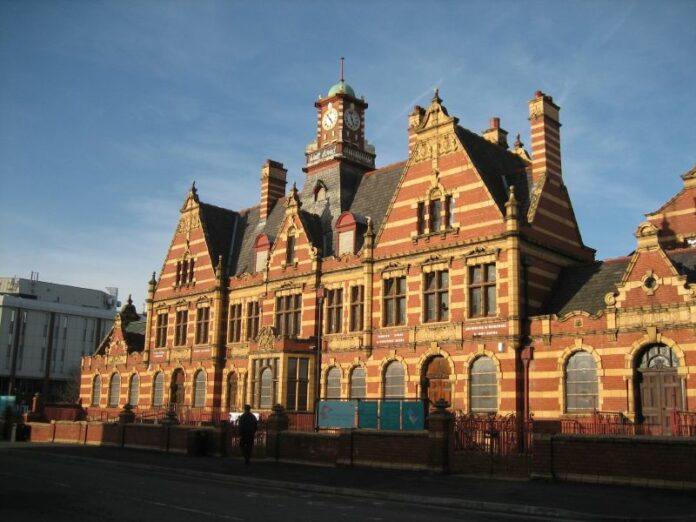Victoria Baths, a captivating example of Edwardian design and craftsmanship, represents an era of elegance and community spirit. In this article, we will delve into the rich history and cultural significance of Victoria Baths.
A Historical Treasure
Victoria Baths, located in the Chorlton-on-Medlock district of Manchester, first opened its doors in 1906. It was designed by architect Henry Price, who envisioned a grand facility to provide sanitation, recreation, and relaxation for the working-class residents of Manchester. This ambitious project was a symbol of the city’s commitment to public health and well-being.
Architectural Splendor
One of the most striking features of Victoria Baths is its exquisite architectural design. The building, a prime example of Edwardian baroque and Renaissance styles, boasts an elegant facade adorned with intricate terracotta decorations, ornamental tiles, and colourful stained glass windows. The interior is equally impressive, featuring a stunning array of mosaic floors, decorative tiles, and tiled changing cubicles.
Three Distinct Pools
Victoria Baths was equipped with three distinct pools: the First-Class Pool, the Second-Class Pool, and the smaller Gala Pool. Each pool was designed with meticulous attention to detail, with the First-Class Pool being the most opulent, featuring stained glass windows, decorative arches, and a balcony for spectators. The pools were not only used for swimming but also hosted galas, competitions, and water polo matches.
The Turkish Baths
In addition to the swimming pools, Victoria Baths also housed Turkish baths, which were a popular relaxation and social activity in the early 20th century. The Turkish baths featured steam rooms, hot rooms, and cooling rooms, providing visitors with a luxurious and rejuvenating experience.
Community Hub
Beyond its architectural splendour, Victoria Baths served as a vital community hub. It offered much-needed public bathing facilities and became a cherished meeting place for the people of Manchester. The Baths were not just a place to swim but also a venue for social gatherings, dances, and events, fostering a strong sense of community spirit.
Decline and Restoration
Despite its early success, Victoria Baths faced challenges in the latter half of the 20th century, leading to its eventual closure in 1993. However, determined efforts from local preservation groups and the Friends of Victoria Baths led to the building’s listing as a Grade II* listed building. Over the years, significant restoration work has been undertaken to preserve its historic features and return the baths to their former glory.
A Cultural Icon
Today, Victoria Baths continues to captivate visitors from around the world. While no longer used as a swimming facility, it has been transformed into a versatile event venue, hosting art exhibitions, craft fairs, vintage markets, and cultural events. The building’s exquisite architectural details provide a stunning backdrop for a wide range of activities.
Victoria Baths stands as a testament to the enduring legacy of Edwardian architecture and the importance of preserving our cultural heritage. Its rich history, stunning design, and role as a community hub have made it a cherished icon in the city of Manchester. As it continues to serve as a cultural and historical focal point, Victoria Baths reminds us of the importance of preserving our architectural treasures for future generations to enjoy.

